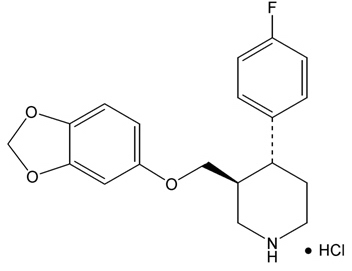D.1 Pharmaceutical products & drug action
Written specifically for students to provide help and support for the IB Diploma chemistry programme this page provides full coverage of the syllabus content of Option D - sub topic D.1. It encourages you to think critically and provides many questions with full worked answers so that you can monitor and improve your knowledge and understanding.
.png)

 Learning outcomes
Learning outcomes
After studying this topic you should be able to:
.png) Understand
Understand
- The therapeutic index, obtained from animal studies, is the lethal dose of a drug for 50% of the animal population, LD50, divided by the minimum effective dose for 50% of the population, ED50.
- The therapeutic index, in humans, is the toxic dose of a drug for 50% of the population, TD50, divided by the minimum effective dose for 50% of the population, ED50.
- The range of dosages between the minimum amounts of the drug that produce the desired effect and a medically unacceptable adverse effect is known as the therapeutic window.
- Drug administration considers dosage, tolerance, addiction and side effects.
- The fraction of the administered dosage that reaches the target part of the human body is known as bioavailability.
- Major steps in the development of synthetic drugs include identifying the need, determining the structure and the synthesis and extraction of the drug to produce the highest possible yield.
Apply your knowledge to:
- Discuss experimental foundations for the therapeutic index and the therapeutic window through both animal and human studies.
- Discuss methods of drug administration.
- Compare how bioavailability can be affected by the types of functional group, polarity and medicinal administration.
Relationships & vocabulary
Nature of science
Medicines and drugs go through many varied tests to determine their effectiveness and safety in order to determine their risk to benefit capacity.
All pharmaceutical products are classified according to their potential for use and abuse before they are made available commercially.
International-mindedness
There is considerable variation between countries as to which drugs are available over the counter (OTC) and which can only be obtained on prescription from a medical practitioner.Vocabulary
| placebo | thalidomide | parenteral | addiction | therapeutic index |
| tolerance | bioavailability | LD50, ED50 and TD50 | dosage | therapeutic window |
Learning slides
You can use this slide gallery for learning or for reviewing concepts and information. It covers all the key points in the syllabus for this sub-topic.
Something to think about
Pharmaceutical products are big business. The classic example of where making a profit was placed above ethical consideration is the thalidomide case.
Thalidomide was introduced as a sedative in the 1950s. It was found to be an effective anti-emetic and was given to pregnant women to prevent morning sickness. The drug was produced by a German company called Grünenthal and also by the Distillers Company in the UK. Although their own research showed some problems they did not initially withdraw the drug even when there were reports that babies were being born with severely deformed limbs. This was because they were making large profits from its sales. The drug was eventually withdrawn in the early 1960s after more than 10,000 babies had been born with the deformities. In 1968 a successful court case led to the Distillers Company paying out a large sum of money in compensation. It was later found that one of the enantiomeric forms of the drug was responsible for the anti-emetic effect and the other caused the deformities as the drug could cross the placental barrier to the foetus.
This happened some fifty-five years ago and one would assume that lessons have been learned and that something similar could not happen again. Unfortunately that is not the case. In 2012 GlaxoSmithKline were fined $3 billion for marketing drugs for unapproved use and for failing to report drug safety information. Three different drugs were involved, Paxil, Wellbutrin and Avandia. Probably the most important abuse concerned Paxil. Paxil is the trade name for paroxetine hydrochloride - it is also marketed as Seroxat.

Paroxetine hydrochloride (Paxil)
Paroxetine hydrochloride is an antidepressant and studies showing that it can increase suicidal tendencies in children, adolescents and young adults were initially supressed or downplayed in order not to affect its profitability. It is now banned for use with patients under the age of eighteen.
Test your understanding of this topic
(Note that your teacher may have restricted your access to some or all of these questions and worked answers if they are going to use them as a class test or set them as an assignment.)
For ten 'quiz' questions (for quick testing of knowledge and understanding with the answers explained) see MC test: Pharmaceutical products & drug action.
For short-answer questions see Pharmaceutical products & drug action questions together with the worked answers on a separate page Pharmaceutical products & drug action answers.
More resources
1. A simple video looking at the stages of drug testing from the point of view of a pill.
2. A more instructive video looking at the history and importance of clinical trials.
3. A video on thalidomide from Louise Delay which shows the history, enantiomers and current usage of thalidomide. It does not give information about the delay in withdrawing the drug and the compensation trials that ensued.
4. Further information on paroxetine hydrochloride and the problems with suicidal tendencies can be obtained from the Internet Drug Index.
5. An article in compound chem.com, produced after a Frenchman died during a drug trial in JIB Docs (2) Teamary 2016, provides a good summary of how drugs are developed.

 IB Docs (2) Team
IB Docs (2) Team 














